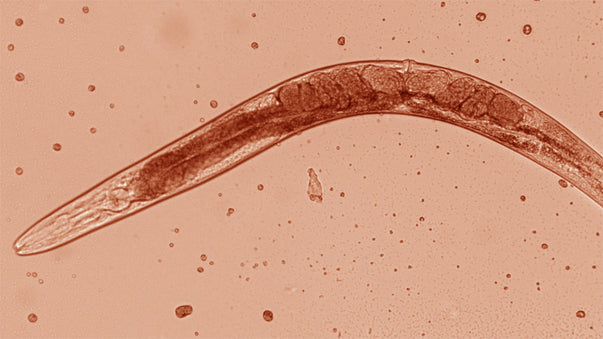Moderately Great Expectations for the 2020s

Welcome to the 20-twenties! I have great expectations for the new decade, but it’s important to moderate one’s enthusiasm. Scientific miracles can happen anytime, but you can’t count on them. So, my prediction is that we’ll see more of what we have seen in the 20-tens.
There will be great scientific advances in biotechnology labs. And there will be challenges to transfer research results from the lab to the clinic. Some challenges won’t be overcome in this decade, but some will.
By the end of the twenties, I guess, cancer will still kill, but hopefully less than now. Aging will not be “defeated” but, hopefully, those who can afford it will be able to live longer in better health. CRISPR-like DNA editing technologies, hailed as one of the great scientific advances of the 2010s, will be on their way to becoming mature medical technologies.
In the meantime, it’s important to stay in good mental and physical health. Don’t forget exercising, as recommended below. Exercise is good for the brain, and in particular for the aging brain.
A new study “provides indirect evidence that aerobic exercise can have a positive impact on cognitive function in addition to physical conditioning," according to Mayo Clinic neurologist Ronald Petersen. "Another important feature of the study is that these results may apply to older adults, as well. There is good evidence for the value of exercise in midlife, but it is encouraging that there can be positive effects on the brain in later life as well."
Exercise Is Good for the Aging Brain
Researchers at the German Center for Neurodegenerative Diseases have provided new evidence of an association between cardiorespiratory fitness and brain health. This appears to be particularly the case in regions of the brain involved with cognitive decline and aging.
The research results are based on a study involving more than 2,000 adults in Germany and published in Mayo Clinic Proceedings. They suggest that cardiorespiratory exercise may contribute to improved brain health and decelerate cognitive decline.
An editorial by three Mayo Clinic experts, that accompanies the Mayo Clinic Proceedings study, says the results are encouraging.
Molecular Switches Enable Gene Therapy Dosing
Scientists at Scripps Research Institute have developed a special molecular switch that could be embedded into gene therapies. They work by inserting copies of a therapeutic gene into the cells of a patient. This would allow doctors to control dosing.
The scientists demonstrated the power of their new switching technique by incorporating it into a gene therapy that produces the hormone erythropoietin. The hormone is used as a treatment for anemia.
The research results were reported in Nature Biotechnology. They offer gene therapy designers what may be the first viable technique for adjusting the activity levels of their therapeutic genes.
Toward More Efficient CRISPR Gene Editing
Researchers at University of Illinois have achieved the highest reported rates of inserting genes into human cells with the CRISPR-Cas9 gene-editing system. This is a necessary step for harnessing CRISPR for clinical gene-therapy applications.
The study was published in Nature Chemical Biology. It shows that, by chemically tweaking the ends of the DNA to be inserted, the new technique is up to five times more efficient than current approaches.
Cancer Dependency Map for Personalized Treatment
Scientists at Wellcome Sanger Institute and Broad Institute of MIT and Harvard have validated input data for the Cancer Dependency Map (Cancer DepMap). This is described in a research paper published in Nature Communications.
Cancer DepMap will provide a comprehensive map of genes necessary for cancer survival. It will also provide a detailed rulebook of precision cancer treatments for patients.
Cancer DepMap researchers take cancer cells from patients and use CRISPR-Cas9 technology to edit genes in these cancer cells. They turn the genes off one-by-one to measure how critical they are for the cancer to survive. The results of these experiments indicate which genes are the most likely to make viable drug targets.
Bacteria Turned into Efficient Protein Factories
Researchers at Washington University have found a way to increase production of proteins in bacteria up to a thousandfold. This discovery could aid production of proteins used in the medical, food, agriculture, chemical, and other industries.
The findings were published in Nature Communications. They could help increase production and drive down costs of making certain protein-based drugs and vaccines.
Hydrogels Heal Wounds and Treat Cancer
Bioengineers at Rice University and Texas Heart Institute are synthesizing hydrogels from the molecules up. The hydrogels are able to help heal wounds, deliver drugs, and treat cancer.
The new hydrogels are described in a research paper published in Biomaterials.
They are designed to be injectable and create desired cellular structures (scaffolds) in a desired location. The body naturally feeds new blood vessels and cells into the scaffold, which degrades over time to leave natural tissue in its place.
CRISPR Targets Antibiotic-Resistant Bacteria
Researchers at UC San Diego have developed a new CRISPR-based genetic technology. It dramatically increases the efficiency of inactivating a gene that renders bacteria antibiotic-resistant.
The new genetic technology is dubbed Pro-AG. And it is detailed in a paper published in Nature Communications.
More Articles
Don't miss a beat! In our Pulse Newsletter, Thrivous curates the most important news on health science and human enhancement, so you can stay informed without wasting time on hype and trivia. It's part of the free Thrivous newsletter. Subscribe now to receive email about human enhancement, nootropics, and geroprotectors, as well as company news and deals.
Read more articles at Thrivous, the human enhancement company. You can browse recent articles in Thrivous Views. See other Pulse Newsletter articles. Or check out an article below.
-
Worm Lifespan Increased 500%, Humans Next?
In a spectacular experiment, the lifespan of laboratory worms (C. elegans) has been increased by 500 percent (see below). The ...
-
Caffeine Enhances Power and Endurance
December brings parties, performances, and presents. The planning can be dizzying. This week I found myself thinking about caffeine a ...


